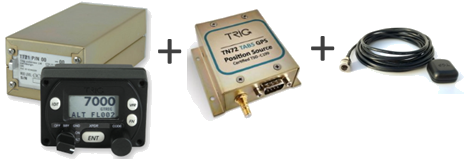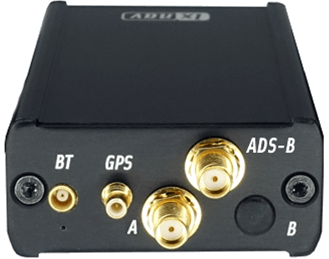Understanding Transponders and ADSB
A transponder is a device used to provide an aircraft’s position while transmitting altitude (Mode C) and identity (Mode S) when it receives an interrogation signal from a ground radar.
Why consider a transponder for my glider?
Flying with a transponder in your glider will increase your visibility to air traffic services, allowing them to better understand your position and altitude. It also makes you more visible to other aircraft equipped with TCAS or PCAS systems.
Additionally, flying with a transponder can increase your chances of being granted zone transits through controlled airspace. Air traffic services can better track your position and altitude, making them more confident in maintaining separation, thus allowing more zone transits.
What is the difference between Class 1 and Class 2?
Class 1 transponders are more powerful and increase your visibility to ground radar stations during long flights at higher altitudes (15,000ft+). For most glider pilots, a Class 2 transponder is sufficient and uses less battery power.
What is ADSB?
ADSB-Out allows an aircraft to broadcast its GPS position, enabling tracking from the ground or another aircraft without an interrogation signal.
- Automatic – transmissions made without interrogation from ground radar.
- Dependent – requires a position source onboard the aircraft (GPS).
- Surveillance – provides radar-like surveillance.
- Broadcast – continually transmits position data.
Why should I consider ADSB?
ADSB-In allows you to see the exact position and altitude of aircraft equipped with ADSB-Out. It also provides PCAS proximity warnings for transponder-equipped aircraft transmitting on Mode S, without ADSB, showing range and altitude differences.
Our most popular ADSB-out setups:
- TRIG TT21 transponder + TRIG TN72 GPS receiver + TRIG TA50 Antenna – certified setup and visible on all ADSB-in devices.

- TQ KTX2 + ADSB-out package – not certified.

Alternative ADSB-out option and a note on ADSB-out certification:
In many modern transponder units, you can wire an existing GPS source (e.g., LX90xx/LX80xx or FLARM) into the transponder to provide GPS data for broadcasting ADSB-Out. However, uncertified GPS units may not be displayed on some ADSB-in devices, particularly modern GA avionics. For maximum visibility, consider the certified TRIG setup mentioned above.
Our most popular ADSB-in setups:
- LXNAV Powermouse FLARM with the ADSB-in module option.

- LXNAV LX90xx/LX80xx series with built-in PowerFLARM and ADSB-in module.
Click here for more information